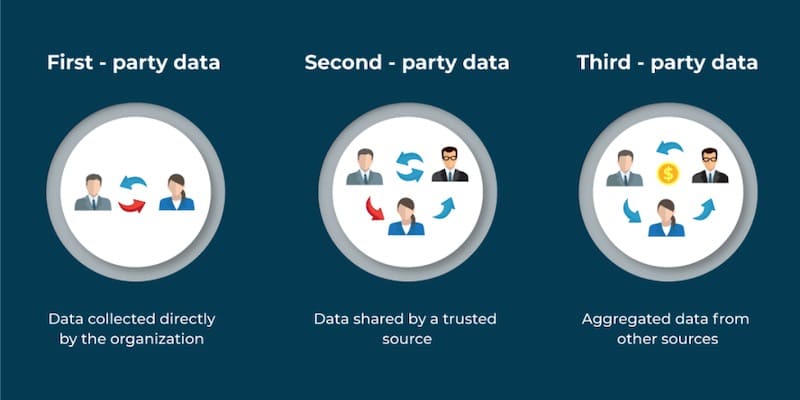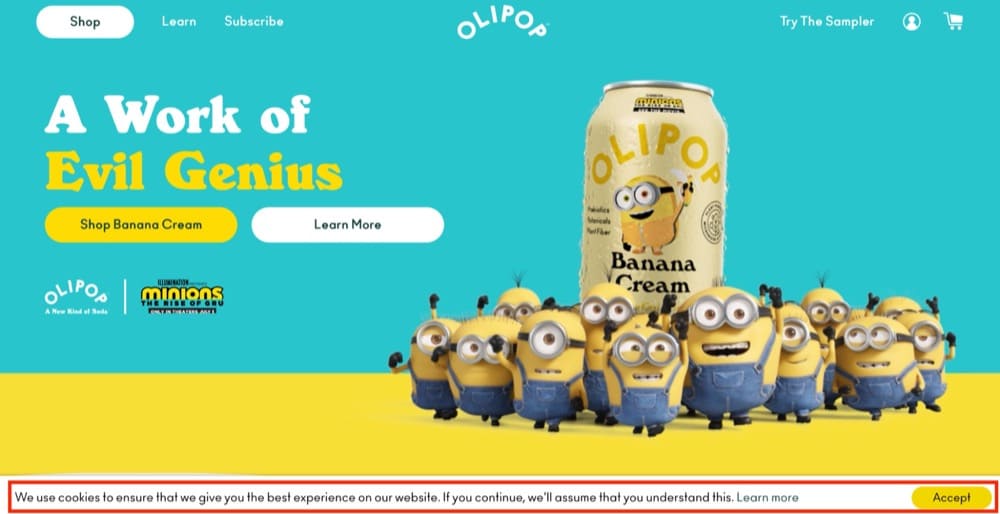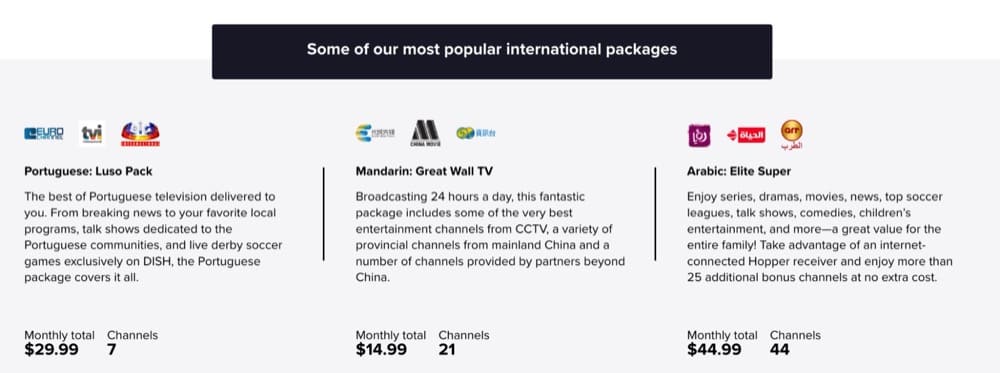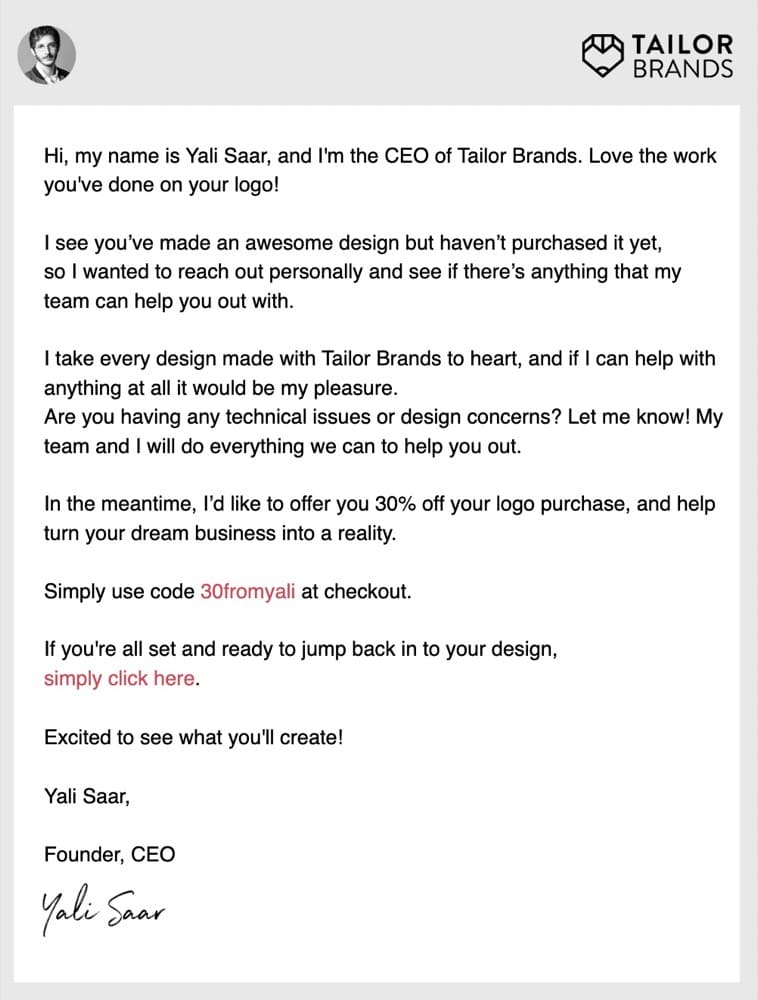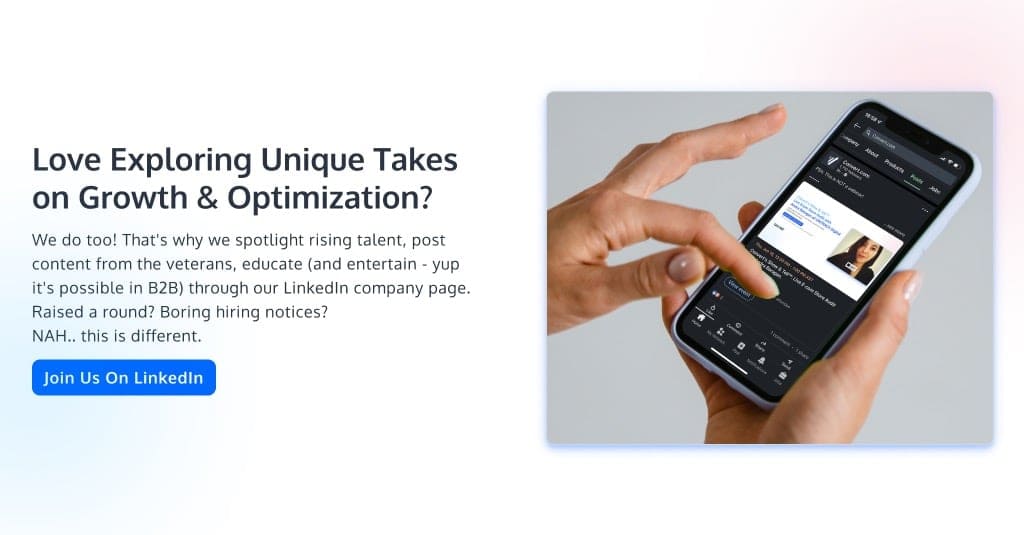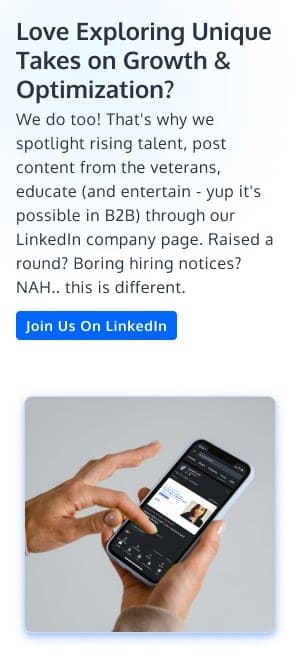How to Use First-Party Data and Email Marketing to Boost Your Conversions

In an increasingly digital world, data is everywhere. And it is no longer just for scientists or finance professionals. First-party data is changing the way we market and engage with customers.
92% of leading marketers believe that using first-party data to help understand what consumers want is critical to driving growth.
From email marketing to retargeting and automation, having a robust connection with your users is essential to improve customer experience, boost conversions, and build customer loyalty.
This post will teach you how to use first-party data in your email marketing strategy to increase conversions and build customer trust.
Let’s dive in.
What is First-Party Data?
First-party data refers to the information that has been collected directly from your audience, including demographics, purchase history, website activity, email engagement, sales interactions, and customer feedback.
First-party data is collected when a visitor lands on or clicks your site, fills out a form, looks at product pages, or engages with a social media post. Anytime visitors take actions like these, a business can collect the information. But more on that later.
When you’ve searched for something online and see ads for that product pop up in your Instagram feed, that’s a classic example of first-party data retargeting.
First-party data helps marketers reach potential customers with personalized ads and email campaigns, nurture them as they become familiar with your brand, and close them into repeat customers as they move through the buyer’s journey.
Why is First-Party Data So Valuable?
First-party data is a powerful tool because it consists of information about your customer’s preferences and comes directly from the source itself.
On the other hand, when you’re using third-party data—which can be collected and scraped from various sources on the web—you’re relying on the information that has been aggregated, segmented, and sold online.
Third-party data is not as precise or up-to-date as what you’d get from your customer information database, which is a more accurate, actionable, and secure way to target your audience.
Using first-party data allows you to personalize your marketing campaigns to speak directly to your customer when they want to see it and with the appropriate information that meets their needs in their buyer’s journey.
And according to Salesforce, 84% of consumers say being treated like a person, not a number, will win their business.
Still not convinced of the power of personalization?
SmarterHQ also reports that 72% of customers will only engage with personalized messaging.
There are many additional statistics that we could share, but you get the point. Personalization is crucial, and first-party data spoon-feeds you the information to create personalized content and interactions.
But how do you obtain first-party data in the first place? And more importantly, how do you use it effectively in your email marketing campaigns?
Let’s take a closer look.
How To Use First-Party Data in Email Marketing
Email is the most personal of all channels, and your customers already use it to communicate with you.
According to David Newman,
Email has an ability many channels don’t: creating valuable, personal touches—at scale.
Your customers’ email addresses are some of your most valuable assets. They’re connected to real people who have permitted you to contact them about your product or service. What if you could use those emails to generate new leads and high-quality prospects?
That’s where first-party data comes in.
First-party data is any information that you collect directly from your customers. It can include customer name and address, phone number, email address, purchase history… anything they’ve given you when they signed up for something or made a purchase from you.
And getting access to more first-party data can help ensure that when someone opens an email from one of your company’s brands—whether it’s a newsletter or an offer for a discount on a new product—they see content tailored specifically for them.
The great thing about email marketing is that it is a two-way street. You can use first-party data to boost your email marketing strategy with personalization, and you can also use email marketing to obtain first-party data from leads.
Additionally, you can use cookies to extract first-party data to boost your conversations. Cookies are tiny specs of data that store information when a consumer visits a website; they are often used to track users’ activities for marketing and monitoring purposes and generate a unique user experience.
Cookies gather helpful information that a business can use to make data-driven decisions, but there is a catch. Data privacy laws and regulations such as GDPR and ePrivacy Directive (EU Cookie Law) have their firm guidelines on how data and cookies can be used.
‘Cookie Laws’ monitor businesses’ use of cookies. In recent years, there has been an increasing demand for stricter regulations involving browser cookies and consent requirements to give users more control and allow them to consent to what information they are okay with sharing with specific sites.
Take Olipop, for example. When you first visit their website, there is a small pop-up at the bottom of the page that shares their site and uses cookies to provide the best experience on their website. Essentially they are asking for consent to use your information (first-party data) to create a personalized experience.
As you probably imagined, creating a cookie policy isn’t exactly a walk in the park. For you to gather any user information, you need to create a policy and check all the boxes to fulfill the different privacy laws and regulations. Using free platforms or tools like a cookie consent manager can be your all-in-one solution to handling cookies to obtain first-party data and avoid lawsuits.
Implementing a zero-trust policy for data access within your organization is key to protecting sensitive customer data that has been collected through cookies. This will ensure that only the employees within your organization who need to have access to this data are able to access it, thus minimizing the risk of data breaches.
We take privacy very seriously at Convert. Several tools and processes have been introduced to ensure that we fully comply with all international privacy laws, and to guide our customers’ compliance as well.
Now that you have legally gained access to the first-party data, how do you use it in email marketing and boost conversions?
Segmentation
Start by segmenting your leads.
Segmentation is dividing your contacts into groups based on their behavior, preferences, or other defying characteristics. The goal of segmenting is to provide messages targeted at the specific needs of your audience.
Now enter the main character: first-party data.
Collecting information from your consumers allows you to create personalized campaigns based on your different audience segments. Now you can start email marketing campaigns with language or phrases that adapt to the tastes and preferences of each segment.
For example, within its TV packages, Infinity Dish has different subscription plans (English, Latino, Sports, and International packages). Therefore, Infinity Dish can create custom welcome and new product emails according to specific demographics and preferences.
Segmenting your audience allows you to send the right email to the right audience at the right time. When customers receive information that speaks directly to their wants and needs, they are much more likely to open and engage with your email than a random email that does not pertain to them.
Take this email from Tailor Brands , for example. After a lead utilized their AI logo creation service, they used the first-party data acquired in the logo creation process and segmented this lead into a win-back campaign category. In this win-back campaign, they get personal with the lead by writing a signed letter from the CEO and incentivizing through a discount code.
This email example includes a powerful combination of segmentation and personalization, the perfect combination for email marketing.
The discount code helps secure the final purchase of the logo, and the personalization pulls at the consumer’s heartstrings, all while creating a sense of credibility and trust for Tailor Brands.
Personalization
Regarding email marketing, segmentation is just the icing on the cake. And personalization is the cherry on top.
As discussed in the earlier examples, segmentation and personalization mesh well to create a dynamic duo in email marketing.
But what other elements are involved in personalization? Can you just slap a dynamic name field into an email template and call it a day?
That is a good start, but that should be the minimum in your email campaigns. Let’s take it a step further.
Perhaps you notice that new customers are not opening emails that feature blog content about industry topics but seem to engage well with emails that announce new product features. Or share tips and tricks on optimizing the AI tools they use the most.
Ding ding, you have a winner. Now you have collected even more first-party data to help deliver high-quality, tailored emails to new customers on a personal level. These users are much more likely to upgrade to your premium features, increasing conversions and lifetime customer value.
By collecting customer data, you can tailor your email campaigns to your audience and make them more relevant in content. However, you must also pay attention to the design, as a clean, easy-to-read email is key to boosting your response rates.
Don’t be afraid to look at examples of emails and other kinds of content from established competitors for some inspiration. For instance, checking out some examples of SaaS emails and pages from top companies might be worthwhile if you are in the SaaS industry.
First-party data provides access to information about your customers that can help you engage with them personally. Using it in your email marketing campaigns can provide relevant messages that will increase customer loyalty and retention rates.
Wrapping Up
First-party data is the most valuable, accurate, and trustworthy data you have about your customers. And it is beneficial for email marketing campaigns.
First-party data can help you segment your audiences, personalize your messaging and content, optimize your sending times, increase subscriber engagement and retention rates, and produce higher ROI on email marketing efforts (and the list goes on).
The more relevant you can make your emails to each recipient based on their unique interests and behaviors, the more value they’ll find in receiving them—which means a better chance of a conversion.


